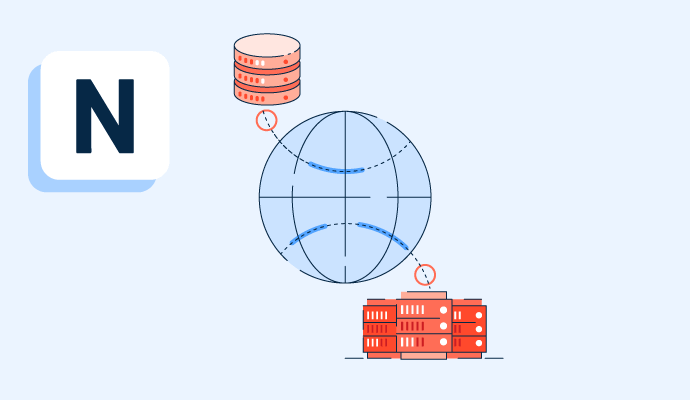What is a network edge?
A network edge is the endpoint where a device or network connects with the internet. It’s typically considered the entry point to a local network and is a critical security boundary between a device and the wider web.
Because a network edge bridges the gap between networks and the internet, cybercriminals looking to access networks or devices can access this point. Ensuring optimal security at the network edge and keeping business data and devices safe from cyber threats are primary responsibilities of IT teams.
Many teams use network sandboxing software to assess potentially suspicious traffic at the network edge, evaluating these data requests against a database of known threats in an isolated environment. This means that traffic can be reviewed safely, without any risk to the device or network.
Basic elements of a network edge
As the connecting point between private and public data sharing, the network edge plays a significant role in network security. For this reason, several elements should always be present at the network edge, including:
- Firewalls and intrusion prevention systems (IPS). These security software and hardware tools should be accessible at the network edge to prevent potential threats from accessing the private network. Firewall management systems are often used to configure and monitor the rules associated with these security measures at the network edge.
- A demilitarized zone (DMZ). This network segment acts as a boundary between internal and external networks, particularly on the network edge of public-facing servers like internet and email. Traffic can be balanced across several DMZs to optimize performance for network users.
- Virtual private networks (VPNs). A secure connection point, like a VPN, may be used at the network edge to conceal a device’s IP address and prevent cybercriminals from reading encrypted data between the private and public network.
- Internet service providers (ISPs). Since the device connects to the internet at the network edge, ISPs typically provide links from the device to the network. When connecting to several ISPs, devices can easily access cloud data and other web-based resources.
Benefits of a network edge
Using network edge computing comes with a number of benefits that make daily operations simpler and more efficient.
- Increased connection speed. Data processing can quickly slow down connections between devices and networks. With a strong and secure network edge, connections develop faster thanks to improved system responses.
- Better network management. Large amounts of data traveling back and forth across the network edge can cause labored load times. A strong network edge with security features reduces bandwidth, making connection speeds faster and sending traffic to various servers at once to improve overall load time.
- Enhanced security measures. As the network edge limits which traffic can access private devices and networks, there’s less risk of malicious activity entering private systems and transferring data to the internet.
Best practices for a network edge
Edge computing optimizes business efficiency. To get the most out of it, companies should consider:
- Assigning ownership of assets. While the IT team should have ultimate control over the network edge and associated features , it’s important to designate responsibilities for configuration and maintenance within this hierarchy. As a key part of a business’s overall cybersecurity, clearly defined roles keep collaboration seamless and updates manageable.
- Using a network edge as a cloud extension. When using both a network edge and cloud computing, companies can scale their operations as they grow. There are pros and cons to using them together, but they can work well together to provide secure data access to authorized users.
- Continually reviewing security measures. Businesses should always review their cybersecurity systems, particularly as criminals become more sophisticated and find new ways to exploit private data. Applications connected at the network edge should be assessed at least annually to ensure they’re still performing to the standards.
- Operating on a zero trust basis. Using a network edge makes it easy for businesses to work from a zero trust model. This means that any user requesting access to the private network beyond the network edge must be reviewed ahead of receiving access, keeping data safe from outside threats.
Network edge vs. network perimeter
The network edge is the point of connection between a company’s device or local area network (LAN) to the internet or a public or private cloud. A network perimeter is a physical boundary between the LAN and a public network. While the edge is the actual point of connection, the network perimeter is the full boundary between private and public.
Improve your company’s cybersecurity systems with security and privacy service providers that work to keep your most important data safe.

Holly Landis
Holly Landis is a freelance writer for G2. She also specializes in being a digital marketing consultant, focusing in on-page SEO, copy, and content writing. She works with SMEs and creative businesses that want to be more intentional with their digital strategies and grow organically on channels they own. As a Brit now living in the USA, you'll usually find her drinking copious amounts of tea in her cherished Anne Boleyn mug while watching endless reruns of Parks and Rec.

